Here's a longish excerpt from the great book "The conquest of the Incas" by John Hemming about Ollantaytambo (Pan Macmillan, 2004, p. 222):
"Ollantaytambo lies at a crucial place in Peruvian geography. It is almost visibly at the junction between the Andes and the Amazon basin. Upstream lies the Yucay valley and the homeland of the mountainous Inca tribe - open country of rolling, grassy hills studded with rocky outcrops, or steep valleys rich in terraces of corn and potatoes."
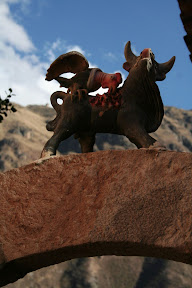
This weird and gory way of sticking it to the Spanish in a not-so-roundabout way is actually based on Andean highland festivals, in which a Condor would be tied to a Bull's back to tear it to pieces bit by bit.

Ollantaytambo (get your tongue around that one!) is a charming little place overrun by tourists going to Machu Picchu but still manages to retain a certain calm and serene village air. We got there late in the afternoon and decided to climb up to the remains of the fortress.
"But downstream, everything changes. As the ground falls away, the foothills of the Andes become quite matted with a tight fur of dense, low jungle. The tranquil Yucay changes its name and character to become the turbulent Urubamba. The climate becomes tropica, with heavy rains, electric storms and clammy mists shrouding the steep green hillsides."
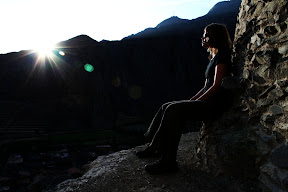
The sun was just setting behind the ridge of one of the mountains that form this junction between two valleys.

Thing is, we managed to pick the "wrong" mountainside, which meant we didn't go into the fortress but rather had a view upon it from the other side of the valley. This fortress was the one Manco Inca sought refuge in after the Spanish had reconquered Cusco. The site so overawed the Spanish punitive expedition sent out by Pizarro, that this was one of the few times that the Spanish were beaten by Inca forces.
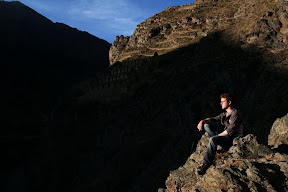
I didn't manage to get any good shots of the site (come to Peru, stop complaining), so you'll have to make do with us gazing at it wistfully.

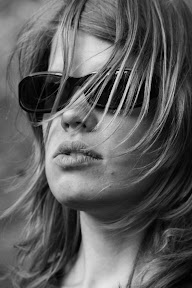

On our side of the valley stood the remains of houses from Inca times - we had the run of the place, since the sun had set by then.
"There are swarms of biting borrachudo flies and coral snakes in the forests. But, above all, there are trees, which begin to cover the ground here and do not relax their grip until the rivers reach the Atlantic."
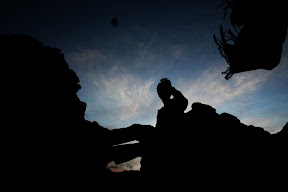
Playing with shadows while sitting in Inca ruins.

Two bulls often preside over the roofs of houses of the region, usually flanked by a larger christian cross; they are meant to protect the house and its inhabitants (yes I know it's disingenuous, but no one was able to offer a more complete explanation)

Machu Picchu was difficult to photograph, because
a) the standard pic has been beaten to death, hung, drawn AND quartered
b) the early afternoon lighting made for harsh shadows
c) there was a huge load of people around until about 4pm
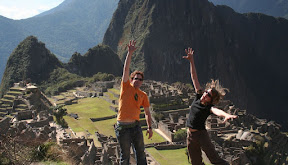
Oh, I just like to complain. We did make a few non-standard shots. Better than the "cool" poise adopted by most male latin american visitors, the cheesy american one or the very very uncool asian V.

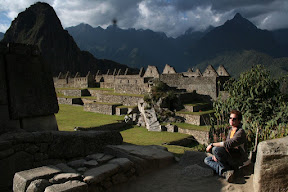
I must admit we shied away from getting a guide, but ended up printing off 10 pages of notes from an Internet history site, which led to some tricky detective work to be able to work out where the hell we were.
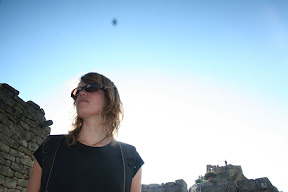
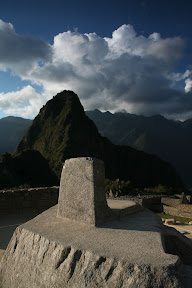
Huayna Picchu - the mountain in the background - eluded us, due to its being open to only 400 visitors per day.
We were rewarded by a great sunset, which cast long shadows over the valleys surrounding Machu Picchu. The peaks around it are usually shrouded in clouds.
Dangling her feet over the abyss was enough to get my heart pumping. I really need to do something about my fear of heights.
Keine Kommentare:
Kommentar veröffentlichen